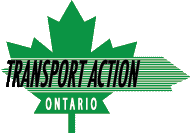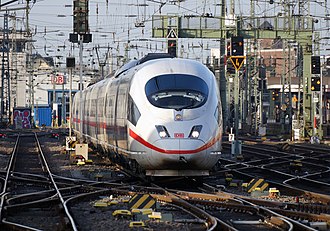
New Report – Is Building Highway 413 the Best Option for Moving People and Goods?
By Transport Action Ontario | Highways and Bridges , Latest News , Major Reports
ENVIRONMENTAL DEFENCE, SUSTAINABLE VAUGHAN, TRANSPORT ACTION ONTARIO
For immediate release: Thursday August 20, 2020
A new report – Is Building Highway 413 the Best Option for Moving People & Goods in the GTA-West Region? – shows the proposed GTA-West Highway is a poor use of funds and suggests alternatives to meet the region’s transportation needs
Toronto, Ont. – A report released today by Environmental Defence, Sustainable Vaughan and Transport Action Ontario, challenges the wisdom of the proposed GTA-West Highway, which would run from the Highway 401/Highway 407 interchange near Milton, to Highway 400 near Kleinburg. This highway proposal, also known as Highway 413, was cancelled in 2018, but then resurrected by the current government. The report argues that the highway will harm the environment and damage communities, while offering little benefit for commuters, making it a poor use of $6 billion tax dollars.
“We don’t need another highway. Highway 413 was cancelled because the public didn’t want it, and because experts determined that the social, environmental and economic costs of the highway outweighed the meagre benefits that this project could deliver,” said Keith Brooks, Programs Director with Environmental Defence. “Highway 413 is still a bad project, and a waste of tax dollars that would be better spent on public transit. Moreover, with more people expected to work from home in the future, a mega-highway is the wrong fit for the region’s transportation needs.”
The adverse environmental impacts of a new transportation corridor of this size are significant, and include impacts to rivers, wetlands and forests, the loss of thousands of hectares of prime agricultural lands including about 1000 hectares in the Greenbelt, damage to waterways from road salt, air pollution affecting nearby residents and increased greenhouse gas emissions.
In addition, there is no evidence to support the idea that highway expansions solve traffic congestion due to what’s known as induced demand. Research has shown that construction of new highway capacity is met soon thereafter with an exactly proportional increase in traffic, due to changes in driving behaviour. Little is accomplished for traffic relief.
“Highway 413 is a bad investment for the citizens of Ontario. It would damage the environment, consume land for low-value uses, promote urban sprawl, not solve traffic congestion and move Ontario away from its climate change goals,” said Peter Miasek, President of Transport Action Ontario. “The transportation alternatives suggested in this report, together with innovative land use ideas like Brampton’s urban boulevard concept, are a much better investment of money.”
The report shows that investments in GO Rail, light rail, and bus rapid transit projects in the western GTA could move four times as many people as the highway could, for a comparable cost. The report also discusses the alternatives proposed by the expert panel struck by the previous government, which argued that extending and expanding existing highways, congestion pricing, and giving trucks priority on Highway 407ETR would accomplish the goals of Highway 413 at a much reduced cost.
The province of Ontario has announced a plan to fast track the environmental assessment for the highway, and recently announced the preferred route. The consultation period for the expedited environmental assessment closes on August 22nd. Meanwhile, the City of Brampton recently voted in favour of a walkable, bike-friendly, higher density, boulevard concept in place of Highway 413, reinforcing that the highway is a bad fit for the region.
“The government has an outdated view of how to boost Ontario’s economy – a new highway, more sprawl, and more pollution isn’t the answer,” adds Keith Brooks. “Transportation is the largest source of carbon emissions in Ontario. In addition, recent modeling estimated that pollution from traffic causes almost 900 premature deaths per year in the Greater Toronto and Hamilton Area (GTHA). We don’t need another highway, more cars, and more pollution.”
The report may be viewed below:




